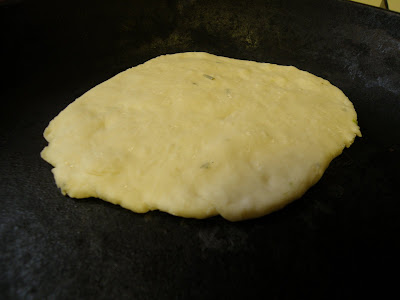
In Parshat Yitro God puts on his own sound and light show replete with smoke, fire, more smoke and shofar blasts (not exactly the same but check out this show at Masadah that I have often heard about). God is cuing up the drama, to let everyone know that this is going to be an important moment and that they'd better pay attention to the rules that are about to follow. God, like all museum guards, doesn't want anyone to get too close to the exhibit and tells Moses to make sure everyone stays a safe distance away from the Mountain. However there wasn't much of a need to be concerned - the Nation is actually so freaked out that they tell Moses they don't want to hear God give the commandments directly to them because they're afraid they might die - they would rather their fearless leader be the go-between. So maybe the fire, smoke and noise was a bit much, or maybe it got everyone in the appropriately awestruck mood.
Now to bring the fire and smoke to the Shabbat table (without actually violating the Sabbath). I've conceptualized a home smoked salmon dish (with the help of liquid smoke) with a spicy salsa that's the fire part.
Much like our wedding menu,* this dish brings together my Irish Heritage with Sam's Mexican heritage. You can get amazingly fresh and wild Salmon from Ireland's River Moy, which runs through County Mayo. My family enjoyed a stay along the river in Ballena several years ago and ate meal after meal of melt in your mouth pink salmon. I will make due with wild Alaskan Salmon from the supermarket. The variety of salsas in Mexico caters to every one's tastes - even those with wimpier palates who don't like a lingering burning sensation on their tongue. I've had salsa with cactus, mango, ridiculously hot chilies and can't wait to eat some more on our upcoming honeymoon in that country (yes we're 2.5 years behind, but at least it's happening)!
Smoke and Fire Salmon and Salsa
You can serve this together as an appetizer. To make it a main dish I would serve it with a wild rice and a grilled vegetable or fresh salad on the side.
I really encourage you to buy wild salmon - the taste is so far above and beyond farm raised salmon, and you'll be doing your part for sustainable eating. I always use the Monterey Bay Aquarium's Seafood Watch Guide when buying my fish to make sure I'm making the best choices (I now use their ipod app but used to carry around the printed pocket guide which you can download at the link above).
1.5 lbs of Wild Salmon
1/2 tsp Liquid Smoke (several companies make a kosher version, I picked up one by Colgin)
½ cup maple syrup
2 cloves of garlic
¼ teaspoon sea salt
pepper
1 onion chopped
2-3 tomatoes
1 small green jalapeno
Bunch of fresh cilantro
1 cantaloupe, seeded
2 limes
salt
To prepare the salmon (I got this recipe from the Colgin link above - they have a stunning amount of recipes!) preheat the oven to 425 degrees. You can either cut the fish into fillets for the number of people you wish to serve or keep one large fillet intact and place the fillet(s) skin side down on a silpat in a baking pan. Mix the liquid smoke with the syrup, garlic, salt and pepper and stir. Brush the fish with half of the syrup mixture and bake the fish for 8 minutes, then brush the rest of syrup onto the fish and bake for 8-10 more minutes (go longer if you prefer your fish more well done). The trick to cooking fish is to watch it and test it to see if it flakes when you poke it with a fork- that's how you know when it is done. After you remove the fish from the oven spoon the syrup that has collected in the pan around it back over the top.
To prepare the salsa I'm using Sam's standard recipe, with the addition of some cantaloupe for a fruity twist. Finely chop the tomato, cilantro (you can use all parts of this herb) and onion. Cut the jalapeno in half and remove the stem and seeds. Finely chop the jalapeno. I would advise washing your hands after handling the jalapeno so that you don't risk burning any part of yourself. Mix with the tomato, cilantro and onion and squeeze the juice of the 2 limes over the mixture and add salt to taste. Cut the cantaloupe into small cubes and add to the mixture last.
* Our Wedding Menu (we were married in July of 2007 on the grounds of a historic home along the Hudson River)
Peppered tuna skewers with wasabi mayonnaise
Charred spicy beef en brochette
Petite ceviche martinis
Individual crudite with fresh guacamole (using Sam's recipe)
Tiny Rueben sandwiches
Classic cod fritters with a horseradish remoulade sauce
Miniature spoons with tiny meatballs and sauted cabbage
Petite Irish potato pie
A selection of cured olives
Dinner
Tortilla crisps and fresh mango salsa
Chilled gazpacho soup served aside a chopped salad of roasted corn, black beans, red onions, cucumber and red peppers
Baby field greens and grape tomatoes served with a roasted eggplant and Portobello mushroom with citrus vinaigrette served on the side in a petite crystal sauce pourer
Grilled fillet of citrus marinated salmon with a lime sauce, served with rosemary roasted Irish potatoes and a medley of summer squashes
Or
Grilled breast of chicken in a barbecue chimichurri sauce, served with green and red cabbage slaw with a horseradish dressing and dilled potato salad
Dessert
Martini glass filled with fresh fruit and topped with passion fruit sorbet, a drizzle of raspberry sauce and a sprig of fresh mint
Platters of grilled fruit on each table














































